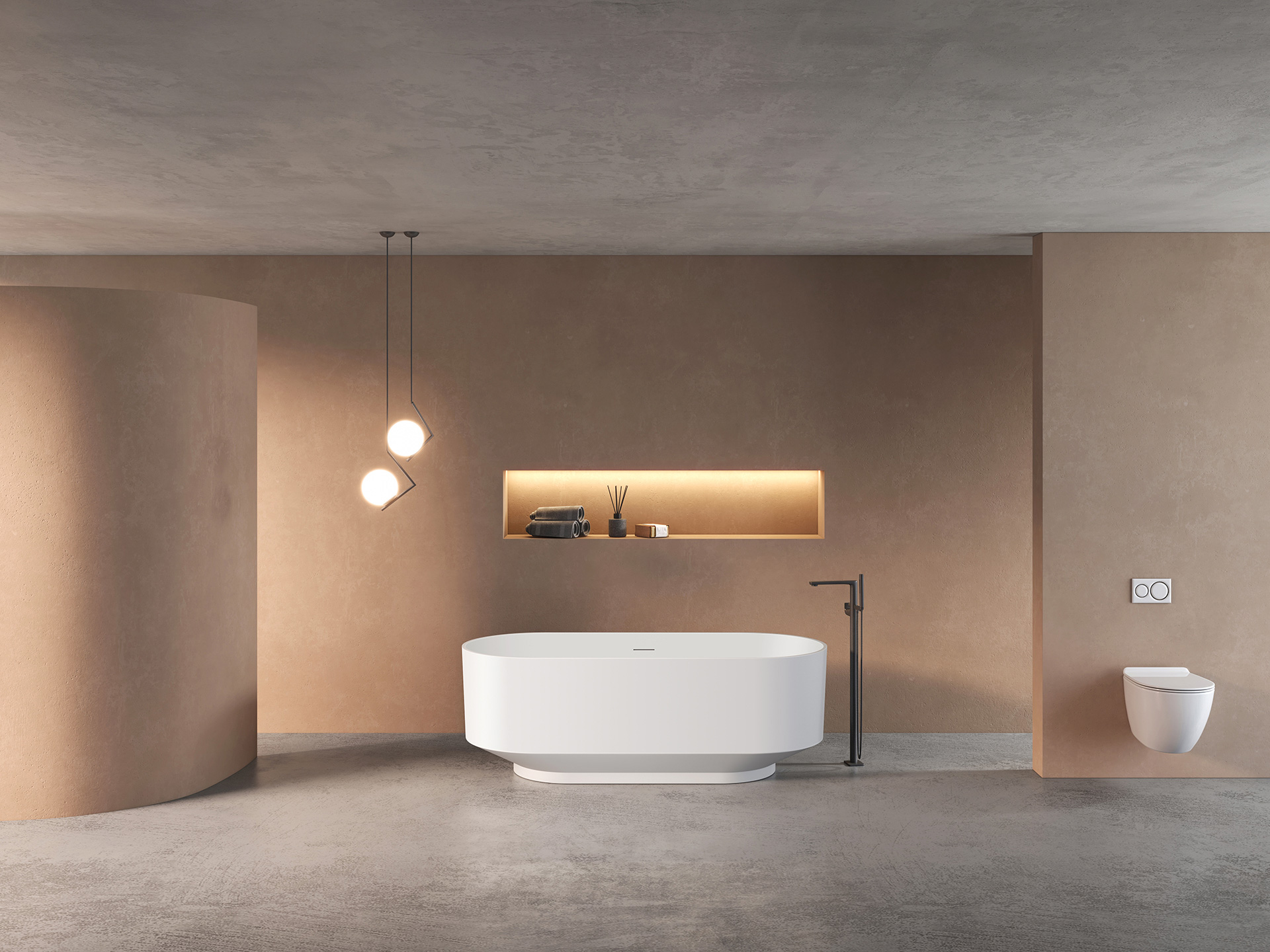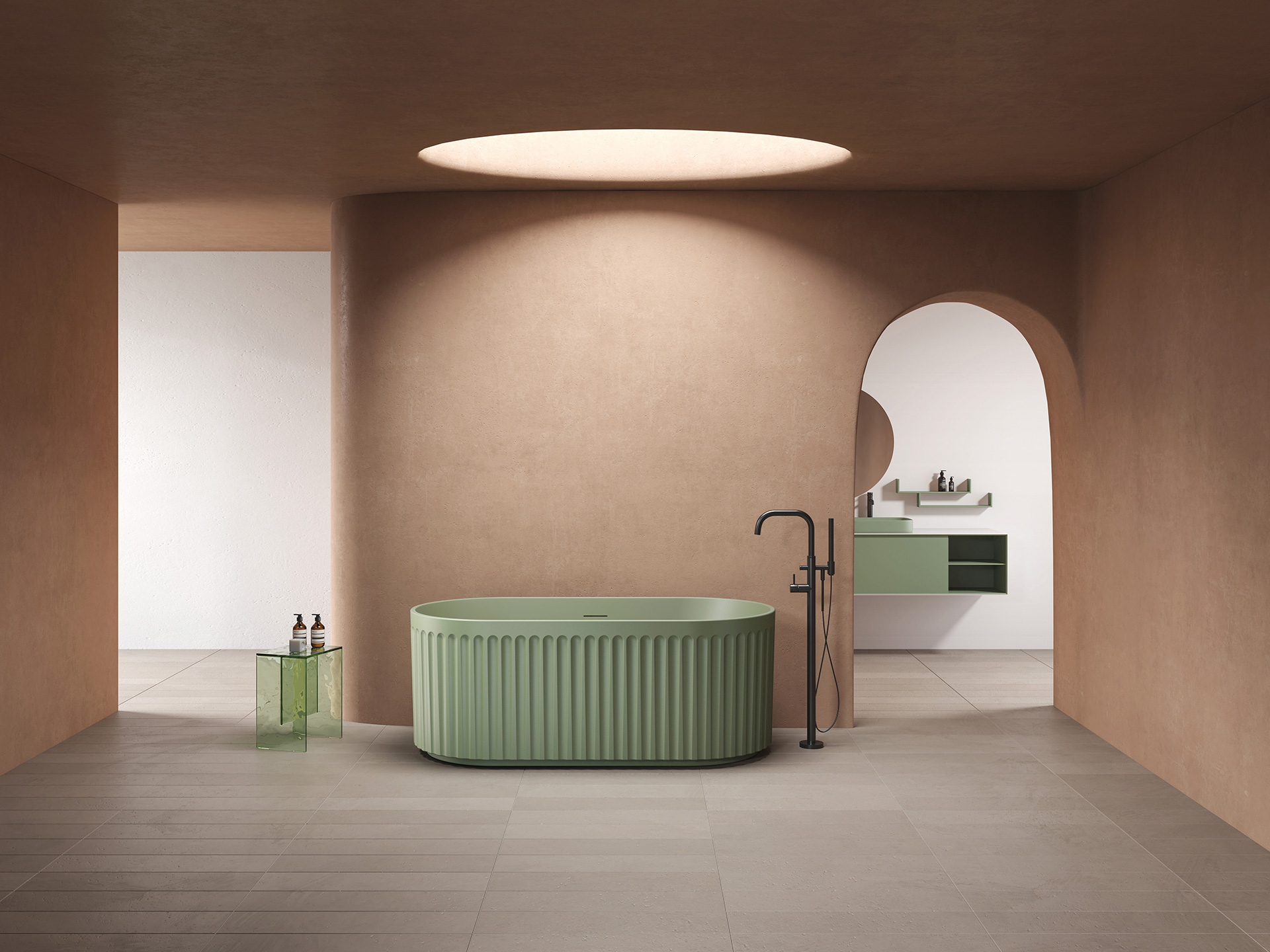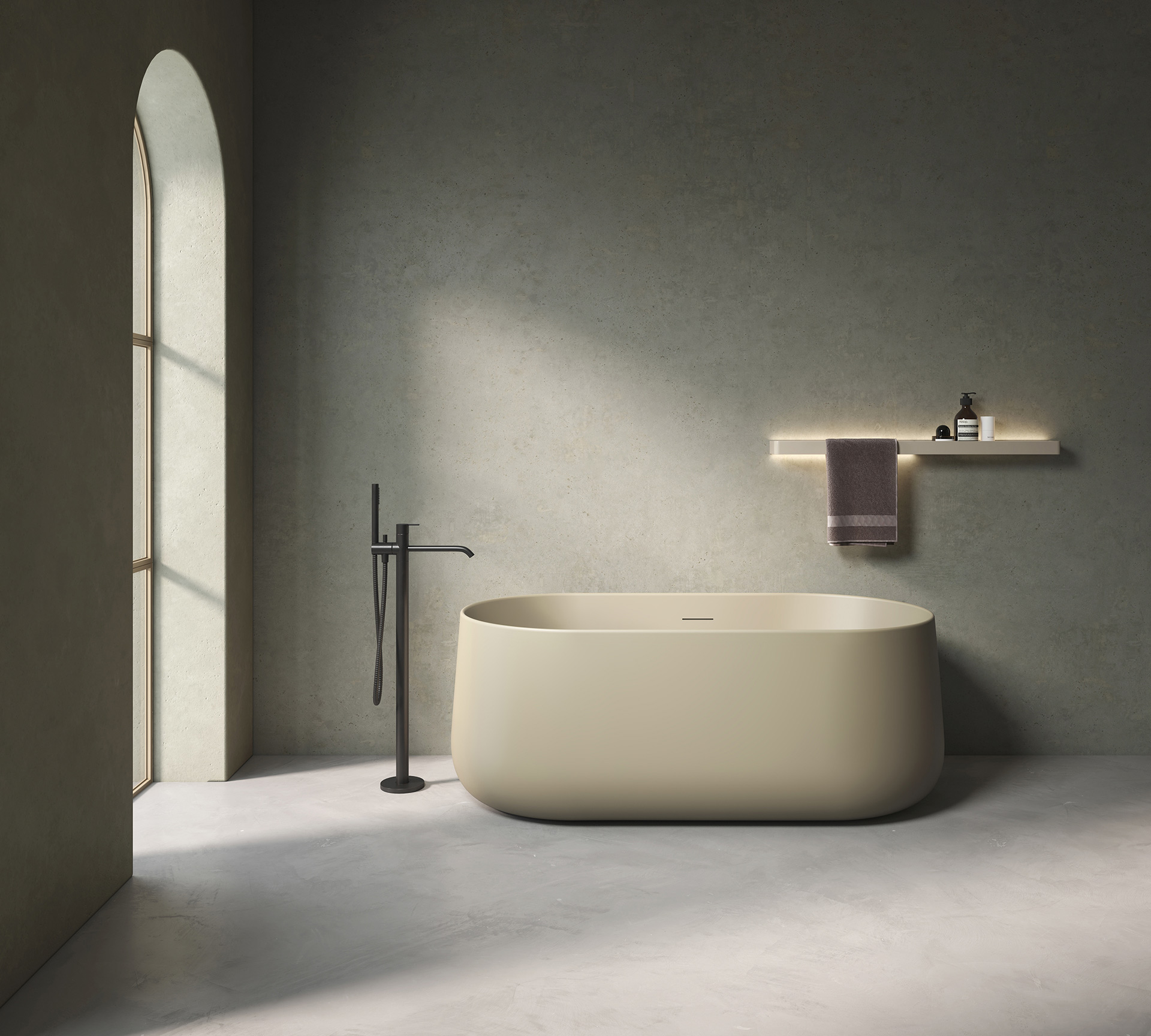When replacing your old tub, the options extend beyond just the right dimensions. You must also select the optimal material both for your budget and your household’s routines. If you’ve weighed acrylic and porcelain tubs as your top contenders but remain undecided, this guide outlines their distinct advantages to reveal the best choice.
Acrylic tub benefits
Durable and Resistant to Damage – Acrylic tubs resist chipping, scratching, and staining better than other materials like fiberglass. They hold up well for years.
Easy To Keep Clean – The non-porous acrylic surface doesn’t allow dirt and grime to cling, making cleaning simple.
Inhibits Mold and Mildew – The slick surface also makes acrylic tubs resistant to gross and damaging mold/mildew growth.
Variety of Shapes and Sizes – Acrylic is a versatile material that can be formed into many tub shapes/sizes for different spaces.
Retains Heat – Acrylic retains bathwater warmth better than other materials like ceramic or cast iron.
Affordable Pricing – While prices vary, acrylic tubs are generally more affordable options compared to premium materials.
Customizable with Color Options – Some acrylic tubs come in a wide range of color options to match your bathroom’s décor.
Lightweight for Easy Installation – Acrylic’s lightweight drawbackstruction makes the tubs easier to move and install vs heavier materials.
Acrylic tub drawbacks – Prone to Scratches Over Time – While durable, acrylic can gradually accumulate light scratches from cleaning tools and other objects over many years.
Lacks Natural Stone Appeal – Acrylic lacks the elegance and decorative visual appeal that materials like stone, granite, or marble can provide.
Less Effective Heat Retention Than Cast Iron – Though it holds heat decently, acrylic doesn’t retain bath water warmth for as long as cast iron tubs.
Can Show Pet Hair/Particles – Tiny hairs, soap residue or particles may cling to the slick acrylic surface more noticeably compared to textured tub materials.
Makes Noise When Flexed – Acrylic tubs can create loud, squeaky noises if weight is shifted while bathing or if force is applied.
Prone to Chipping Along Cut Areas – The edges and cut contours on acrylic tubs can be susceptible to chips and cracks if hit the wrong way.
Not as Durable for Heavy Use – Acrylic tubs may show more visible wear sooner compared to other materials if used frequently by multiple household members.
May Show Water Spotting – Due to its slippery surface, water spots and mineral deposits may linger if not wiped down thoroughly after bathing.
Procelain tub benefits
Durability & Longevity – Porcelain enameled steel is extremely durable. With proper care, porcelain tubs can last for decades.
Stain & Chemical Resistant – The glasslike porcelain coating prevents stains from soaps, body oils, and other bath products from setting in permanently.
Easy to Clean – The ultra-smooth nonporous surface makes cleaning simple with quick wipe downs. Resists soap scum buildup.
Aesthetically Appealing – Porcelain offers an attractive, bright white appearance that beautifully fits classic and modern bathrooms alike when new.
Good Heat Retention – The porcelain steel drawbackstruction retains heat energy effectively to keep bath water hotter for longer.
Quiet with Some Models – Some companies offer sound-dampening porcelain tub models prevent loud echoes and noises.
Wide Range of Sizes – Porcelain comes in sizes from compact small spaces to large spacious tubs and vessels. Availability depends on the brand.
Good for Soaking – Porcelain tends to be deeper on average than other tubs, creating space to soak away tight muscles.
Doesn’t Show Small Scratches – While chips and cracks require repair, small scratches blend away visually on porcelain better than glossy acrylic.
Procelain tub drawbacks
Prone to Chipping and Cracking – Porcelain has a glasslike finish that can easily chip if hit hard enough. Cracks are also common over time.
High Cost – Porcelain tubs are on the pricier end for tub materials. The installation cost is also typically higher.
Heavy Weight – Porcelain tubs are extremely heavy, making delivery and installation more complex. May require bathroom modifications.
Slow Heat Conduction – Porcelain does not transfer heat rapidly, so cooling down bath water faster than other materials. Maintaining desired temp can be difficult.
Noisy – Can produce loud echoing noises as porcelain amplifies sounds against the hard surfaces. May bother some users.
Limited Shape Options – The weight restrictions of porcelain limit the kinds of shapes and sizes available compared to lighter acrylic tubs.
Requires Gentle Cleaning – Harsh chemical cleaners can damage the smooth porcelain surface, so only mild cleaners and gentle scrubbing are safe.
Noticeable Hair/Residue – Dust, hair particles, and soap scum tend to cling clearly to the glossy porcelain, requiring frequent wipe downs.
Prone to Discoloration – Porcelain tubs may gradually lose their bright white color and take on a dull, yellowish tinge over time with regular use.
How to choose between Porcelain and Acrylic tub for your needs?
Both acrylic and porcelain tubs have their own sets of benefits and drawbacks to weigh when choosing a bathtub material. But in general, acrylic comes out as the better option for most homeowners’ needs for a few key reasons:
Acrylic tub costs are significantly lower – On average, acrylic costs $100-600 less than porcelain. This makes them the budget-friendly choice that still offers durability.
Easier care and cleaning – Acrylic’s nonporous surface prevents soap residue build up, doesn’t show small hairs/particles as visibly, and wipes clean super easily. Porcelain requires careful cleaning.
Resists chipping and scratching – While acrylic can gradually accumulate light scratches, porcelain’s chip-prone glasslike surface makes the tub vulnerable to exposing the steel underneath.
Lighter weight for easier handling – At over 100 pounds lighter on average than porcelain before water filling, acrylic puts less strain on installers and allows for more flexibilty.
Wider range of style options – From walk-in tubs to corner tubs and a rainbow of color choices, acrylic can be molded into more shapes and customized looks.
The only instances where porcelain may be more preferable are for those wanting the natural aesthetic appeal or the superior heat retention abilities. But for most homeowners shopping on a budget, wanting ease of maintenance, durability, and style options, acrylic comes out as the best bathtub material choice overall.



